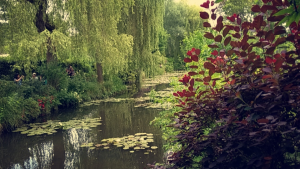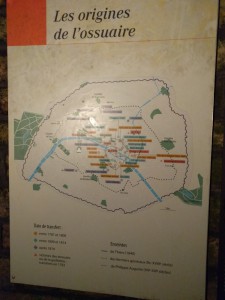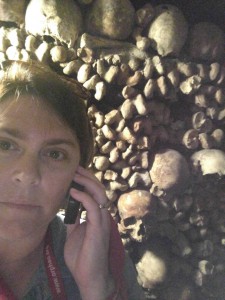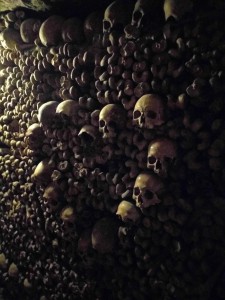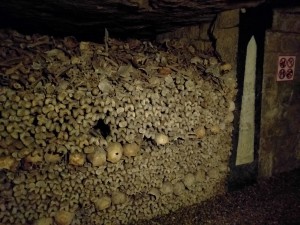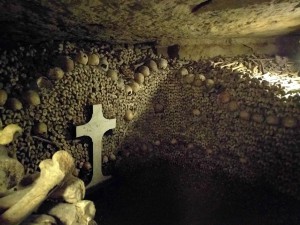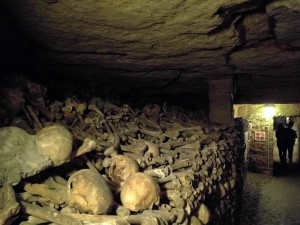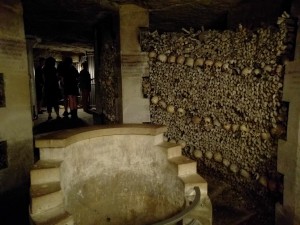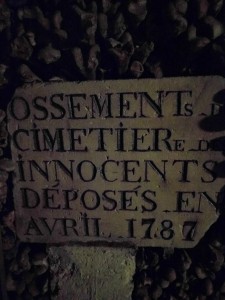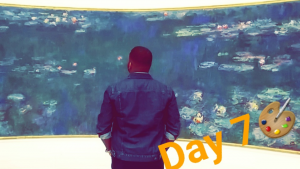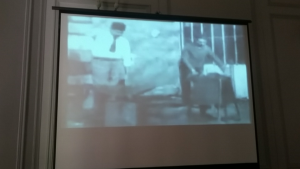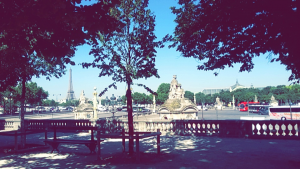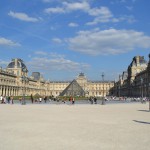After one full fulfilling week of walks, visits, discussions, and history lessons in Paris we were granted a well-earned restorative “grasse matinée” this Friday morning July 8, 2016; just enough time to digest and reflect on the week’s happenings before venturing out into the city again.
We began our day by visiting Boulevard Haussmann, which, compared to the smaller narrower quaint old Parisian streets that most people may be familiar with, is one grand, spacious tree-lined avenue consisting mainly of apartment blocks, but famous also for its iconic Parisian department stores, namely the famous Galeries Lafayette, and Printemps.
Boulevard Haussmann was named after the architect who designed it, Baron Haussmann, who was the Prefect of the Seine Department under Napoléon III. Haussman’s intent in building this boulevard was part of his grand vision for the renovation and modernization of the city of Paris. Au Printemps was the first department store to be built on this nineteenth-century boulevard. The store’s architecture was sumptuous, very palace-like, with statues and a gold leafed roof gracing its exterior. Before the creation of department stores in the nineteenth century people had their clothes made to order, in small tailor shops that often did not cater to, and indeed seldom welcomed, the lower classes.
Department stores “democratized” accessibility to personal attire, allowing anyone, regardless of class, accent, or social and regional background to shop without being identified with one group or another, and more importantly without being belittled or stigmatized. Also, the concept of a “price tag,” popularized in Parisian department stores, allowed people to shop around and “price check” items they may be interested in purchasing, without suffering the burden of having to deal with often onerous professional tailors. This marked the beginning of consumerism, mass manufacturing, the diminishment of small shops, and the creation and rise of a working/middle class.
Additionally, Paris’s Les Grand Boulevard, of which Boulevard Haussmann was an important example, allowed people to see more of what’s around them and gave them the possibility to go out and be seen. This then created the urban notion of “being aware” and possibly “copying” and “duplicating” the practices of “others,” and the ways in which people dressed, walked, talked and acted within the public sphere. By then, buildings were being erected at greater heights, often at equal, even heights, giving the boulevards a pleasing eyeline.
Looking closely at the architecture of apartment blocks and homes lining the boulevard reveals sections with clearly intended for distinct social classes. The ground floor apartments were ordinarily left for the very poor due to the fact that their locations, closer to the streets, made them noisier, and arguably less courtly. The floors above street level, that is to say the first floor, was generally reserved for the rich, as often could be seen from their larger windows (perhaps intended to reveal sumptuous interiors.) Likewise, as we progressively move up the floors, the windows generally got smaller, with the very top floor, the attic, where the servants lived, displaying the smallest windows.
Our class went inside to visit the Printemps department store, in order to see not only the establishment itself but also its beautiful architecture with its colorful stained glass window ceiling. Connected to the Printemps, by way of a bridge is another iconic Parisian department store, the Galleries Lafayette, also by its own stained-glass window dome ceiling. Around the dome are the coat of arms of all of France’s provinces, perhaps suggesting to the visitors that all people, from all regions and all walks of life were welcome. We later went out to the terrace, to take in a beautiful view of Paris, savored from a different perspective.
We then went to the Quartier BNF, an up and coming area which once held the working class, but was transformed into a more intellectual center. Book-shaped buildings can be seen holding books and scripts, giving way to the Passerelle Simone de Beauvoir, a pedestrian bridge over the Seine, built in the form of a wave. Although aesthetically pleasing, these “newer” architectural styles have proven to be somewhat inconvenient and less than functional.
After our little walk to la BNF we went to visit La Cinémathèque Française, a building designed by Frank Gehry, and which was originally intended for the American cultural center which was later moved to a different more practical location.
La Cinémathèque itself was created by Henri Langlois with the intention of preserving any and all films and props that he was able to get his hands on. La Cinémathèque is of great importance for the preservation of art, history, culture and knowledge which would have otherwise been lost in times past. Cinéma as an art form has been of great importance in French culture. We entered the dimmed room of the museum which had spotlights on objects and small films being projected on the walls. In this exhibit we were able to view the evolution of film cameras, moving-pictures technologies, props, costumes, and tools used for cinema throughout its history. The exhibit revealed that through history humans appeared to have always had an interest in moving pictures, as a way of preserving and perpetuating the present. We learned that some “early” moving pictures were achieved through optical illusions; others were shadow shows used in places such as Rome and China; others still were puppet shows, the unrolling of painted paper rolls (as used in India,) or a spinning cylinder with slits along the exterior to view a picture or an object “move” inside. Other moving-pictures techniques included “stop action photography” used by Muybridge.
Over time, these early forms of “moving-pictures,” or or optical illusions, eventually led to the invention of film. Films started out black and white, and silent. Some early films were painstakingly colorized by painting every slide by hand. Later the gramophone was invented which allowed to add sound to film. In 1895, the famous Frères Lumière brothers invented the first film camera to capture moving images. With this, their new technology, they planned to capture the movement of life in its social and political interations, providing an informative and documentary-like record.
In 1895 the Lumière brothers produced a very short film called “L’arrivée d’un train” (A Train Arrival,) with the first showing scaring people out of the projection room due to their thought that a real train was actually coming toward them. Film became a sensation; an incredible concept. Anyone was now able to watch moving images and understand their content, even if they were illiterate.
Likewise, film was able to capture the Industrial Revolution and various ways of life of various people around the globe. Around the same time the Lumière brothers were making their mark, in 1896, Georges Mélièrs chose to use film for entertainment, circus, comedic, theatrical, creative, fiction, and artistic purposes; in sum, two very different purposes of film which still define the medium to this day.
During this visit, were able to watch snippets of films projected on the walls with some items used during the film displayed below. Among the films we were able to see were “Metropolis” with the real metal robot suit from the film, “L’Étoile de Mer” a surrealist picture, and Charlie Chaplin’s “Modern Times,” a film which can still make us laugh to this day, featuring a story about the fast pace of technology, which humans are ill disposed to keep up with, and which may ultimately crush them; a theme that eerily still rings true in our time. Overall, today was a gratifying illuminating culmination of a likewise interesting and fulfilling week.





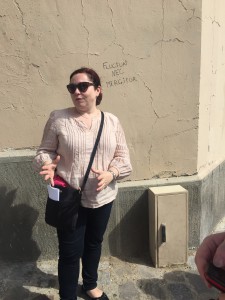
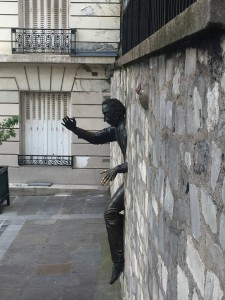
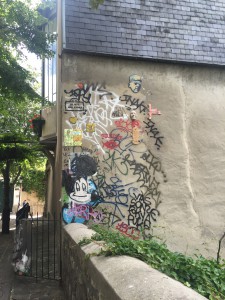

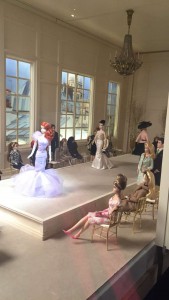
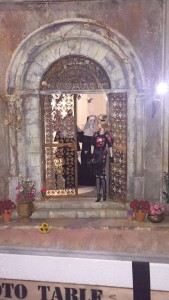
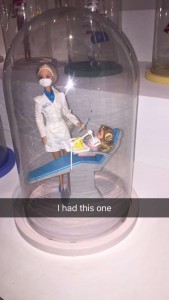
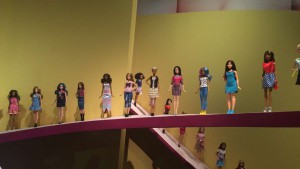
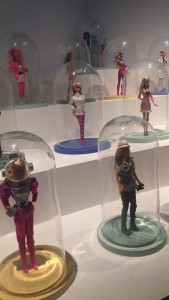
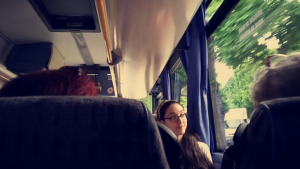
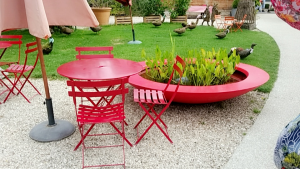
 Claude Monet’s Foundation presents the beautiful gardens and the house of Claude Monet in Giverny.
Claude Monet’s Foundation presents the beautiful gardens and the house of Claude Monet in Giverny.